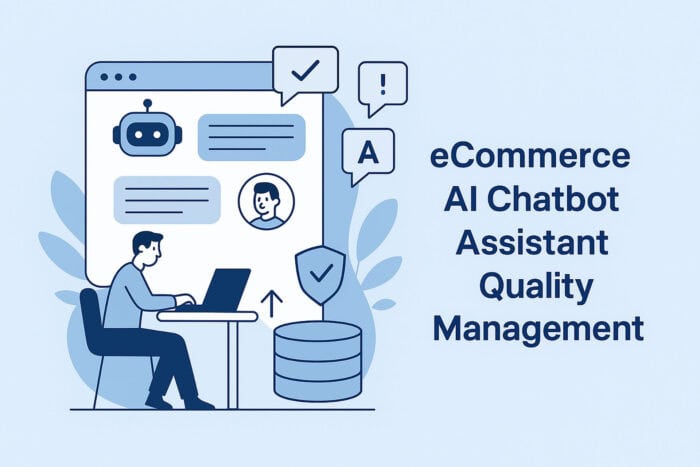Managing AI Quality in eCommerce Chatbots: Balancing Automation with Accuracy

As eCommerce businesses look to scale, improve customer experience, and reduce support costs, AI chatbots powered by large language models (LLMs) are becoming an increasingly attractive solution. From recommending the right product based on a customer’s problem statement to identifying replacements for obsolete or competitor parts, eCommerce AI chatbot assistants can handle complex queries faster and more efficiently than traditional human teams.
But there’s a catch: No one wants an AI chatbot confidently providing the wrong answer.
At McKenna Consultants, we specialise in building AI-powered eCommerce software solutions, and we know that quality management is key. AI can drive exceptional efficiency—instant responses, 24/7 availability, lower costs, and high scalability—but it must be governed by robust quality controls to protect brand trust and deliver real value.
Here are three practical mechanisms we recommend for managing AI chatbot quality in complex eCommerce environments.
1. Build a Custom Chat Review Platform That Explains LLM Reasoning
Most LLMs are black boxes. When a chatbot gives a surprising or incorrect answer, it’s often unclear why. To overcome this, we build custom chat review platforms that:
- Display which contextual documents were used via Retrieval-Augmented Generation (RAG).
- Highlight how the LLM interpreted the customer query. This might include showing how the model paraphrased or reformulated the user’s original input, what entities or keywords it identified as significant, and how it matched those to internal knowledge sources. For example, a reviewer might see that the chatbot interpreted ‘my pump is leaking’ as a request for a specific replacement seal and see which product identifiers were prioritised as a result.
- Show the decision path taken to arrive at the final answer.
RAG (Retrieval-Augmented Generation) is a technique where external documents (such as PDFs, product databases, or manuals) are retrieved based on the user’s query and injected into the prompt to guide the LLM’s response. This helps the chatbot answer more accurately using up-to-date and business-specific information.
This transparency empowers internal teams to diagnose issues quickly. For example, if a chatbot incorrectly suggests a product, the review platform might reveal that an outdated PDF was used, or a similar product name was mistakenly prioritised.
2. Use a Second LLM to Evaluate Responses Before They Are Sent
Another effective strategy is deploying a secondary LLM as a “quality gatekeeper.” Before the chatbot’s response reaches the customer, it is evaluated for:
- Factual accuracy.
- Appropriateness and tone.
- Alignment with company policies and product constraints.
If the secondary LLM identifies potential issues, the response can be blocked, rewritten, or escalated to a human. This automated guardrail adds a layer of assurance without slowing down response times.
This is a classic example of a human-in-the-loop approach, where automation is balanced with human oversight to ensure quality and accountability.
3. Automatically Review Chats and Flag Issues for Human Oversight
Not every conversation requires human intervention—but some do. We implement automated review systems that:
- Continuously scan all chatbot interactions.
- Flag chats with low confidence, unusual queries, or negative customer sentiment.
- Prioritise these for urgent human review.
This ensures that humans stay in the loop where they are most valuable: improving the underlying data, handling edge cases, and maintaining high service standards. This continuous human-in-the-loop feedback mechanism is critical to sustaining chatbot reliability over time.
Quality Management Drives Long-Term AI Success
Focusing on chatbot quality does more than prevent mistakes. It allows businesses to:
- Continuously improve their AI assistant by refining the underlying knowledge base.
- Understand gaps in product data and customer communication.
- Build customer trust in the AI assistant over time.
- Leverage analytics and continuous improvement to adapt to evolving customer needs and optimise chatbot performance.
In short, a strong feedback loop between AI output, human review, and data improvement is essential to delivering a reliable eCommerce AI chatbot.
Why McKenna Consultants?
We build bespoke software solutions for large, complex eCommerce environments. Our experience in back-end systems, AI integration, and data-driven applications positions us perfectly to help clients deploy high-quality, high-performance eCommerce AI assistants.
If you’re considering introducing or upgrading your eCommerce AI chatbot, let’s talk.
Posted in: Artificial Intelligence, eCommerce, News Tags: artificial intelligence
